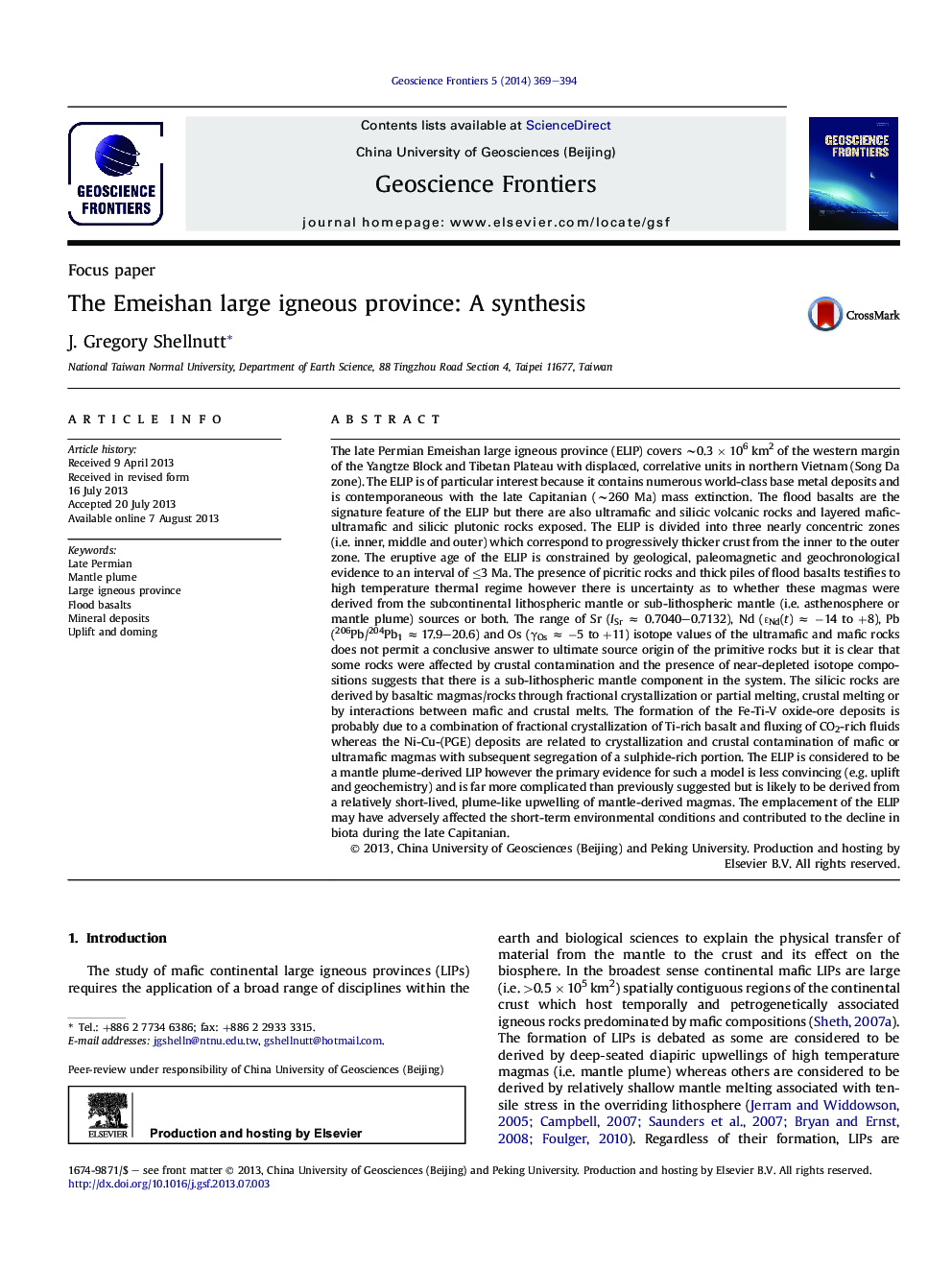| کد مقاله | کد نشریه | سال انتشار | مقاله انگلیسی | نسخه تمام متن |
|---|---|---|---|---|
| 4681581 | 1348859 | 2014 | 26 صفحه PDF | دانلود رایگان |
• The late Permian ELIP is contemporaneous with the end-Guadalupian mass extinction.
• The eruption of flood basalts was short-lived (≤2 Ma).
• The magmatic rocks have a wide-range in Sr-Nd-Pb-Os-Hf isotopes.
• Uplift and doming of the crust prior to the emplacement of the ELIP is debated.
• There are numerous magmatic Fe-Ti-V oxide and Ni-Cu-(PGE) deposits in the ELIP.
• The ELIP was likely derived from a mantle plume.
The late Permian Emeishan large igneous province (ELIP) covers ∼0.3 × 106 km2 of the western margin of the Yangtze Block and Tibetan Plateau with displaced, correlative units in northern Vietnam (Song Da zone). The ELIP is of particular interest because it contains numerous world-class base metal deposits and is contemporaneous with the late Capitanian (∼260 Ma) mass extinction. The flood basalts are the signature feature of the ELIP but there are also ultramafic and silicic volcanic rocks and layered mafic-ultramafic and silicic plutonic rocks exposed. The ELIP is divided into three nearly concentric zones (i.e. inner, middle and outer) which correspond to progressively thicker crust from the inner to the outer zone. The eruptive age of the ELIP is constrained by geological, paleomagnetic and geochronological evidence to an interval of ≤3 Ma. The presence of picritic rocks and thick piles of flood basalts testifies to high temperature thermal regime however there is uncertainty as to whether these magmas were derived from the subcontinental lithospheric mantle or sub-lithospheric mantle (i.e. asthenosphere or mantle plume) sources or both. The range of Sr (ISr ≈ 0.7040–0.7132), Nd (ɛNd(t) ≈ −14 to +8), Pb (206Pb/204Pb1 ≈ 17.9–20.6) and Os (γOs ≈ −5 to +11) isotope values of the ultramafic and mafic rocks does not permit a conclusive answer to ultimate source origin of the primitive rocks but it is clear that some rocks were affected by crustal contamination and the presence of near-depleted isotope compositions suggests that there is a sub-lithospheric mantle component in the system. The silicic rocks are derived by basaltic magmas/rocks through fractional crystallization or partial melting, crustal melting or by interactions between mafic and crustal melts. The formation of the Fe-Ti-V oxide-ore deposits is probably due to a combination of fractional crystallization of Ti-rich basalt and fluxing of CO2-rich fluids whereas the Ni-Cu-(PGE) deposits are related to crystallization and crustal contamination of mafic or ultramafic magmas with subsequent segregation of a sulphide-rich portion. The ELIP is considered to be a mantle plume-derived LIP however the primary evidence for such a model is less convincing (e.g. uplift and geochemistry) and is far more complicated than previously suggested but is likely to be derived from a relatively short-lived, plume-like upwelling of mantle-derived magmas. The emplacement of the ELIP may have adversely affected the short-term environmental conditions and contributed to the decline in biota during the late Capitanian.
Figure optionsDownload as PowerPoint slide
Journal: Geoscience Frontiers - Volume 5, Issue 3, May 2014, Pages 369–394
